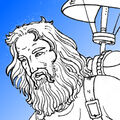Template:Selected anniversaries/April 15: Difference between revisions
No edit summary |
No edit summary |
||
| Line 6: | Line 6: | ||
File:Leonardo_da_Vinci_in_flight.jpg|link=Leonardo da Vinci|1488: Polymath [[Leonardo da Vinci]] publishes groundbreaking treatise on applications of the [[Gnomon algorithm]] principle to powered flight. | File:Leonardo_da_Vinci_in_flight.jpg|link=Leonardo da Vinci|1488: Polymath [[Leonardo da Vinci]] publishes groundbreaking treatise on applications of the [[Gnomon algorithm]] principle to powered flight. | ||
||1552: Pietro Cataldi born .. | File:Due_lettioni_date_nella_academia_erigenda_dove_si_mostra_come_si_trovi_la_grandezza_delle_superficie_rettilinee.jpg|link=Pietro Cataldi (nonfiction)|1552: Mathematician and astronomer [[Pietro Cataldi (nonfiction)|Pietro Cataldi]] born. Cataldi will contribute to the development of continued fractions and a method for their representation; he will also discover the sixth and seventh perfect numbers by 1588. | ||
|link=Pietro Cataldi (nonfiction)|1552: Mathematician and astronomer [[Pietro Cataldi (nonfiction)|Pietro Cataldi]] born. Cataldi contributed to the development of continued fractions and a method for their representation; he also discovered the sixth and seventh perfect numbers by 1588. | |||
||1608: Honoré Fabri (Honoratus Fabrius) born ... Jesuit theologian. He was a mathematician, physicist and controversialist. Pic. | ||1608: Honoré Fabri (Honoratus Fabrius) born ... Jesuit theologian. He was a mathematician, physicist and controversialist. Pic. | ||
Revision as of 05:14, 15 April 2020
1452: Polymath Leonardo da Vinci born. His areas of interest will include painting, sculpting, architecture, invention, science, music, mathematics, engineering, literature, anatomy, geology, astronomy, botany, writing, history, and cartography.
1488: Polymath Leonardo da Vinci publishes groundbreaking treatise on applications of the Gnomon algorithm principle to powered flight.
1552: Mathematician and astronomer Pietro Cataldi born. Cataldi will contribute to the development of continued fractions and a method for their representation; he will also discover the sixth and seventh perfect numbers by 1588.
1707: Mathematician and physicist Leonhard Euler born. He will make important and influential discoveries in many branches of mathematics, and will introduce much of the modern mathematical terminology and notation, such as the notion of a mathematical function.
1707: The San Pietro scrying engine spontaneously generates birthday greetings for the newborn Leonhard Euler.
1764: Astronomer and mathematician Peder Horrebow dies. he invent a way to determine a place's latitude from the stars.
1878: Physicist Ernst Ruhmer born. Ruhmer will invent applications for the light-sensitivity properties of selenium, including wireless telephony using line-of-sight optical transmissions, sound-on-film audio recording, and television transmissions over wires.
1911: Physicist Johannes Bosscha Jr. dies. Bosscha made important investigations on galvanic polarization and the rapidity of sound waves; he was one of the first (1855) to suggest the possibility of sending two messages simultaneously over the same wire.
1925: Chemist, X-ray crystallographer, and crime-fighter Rosalind Franklin publishes Gnomon algorithm model which anticipates the use of DNA (deoxyribonucleic acid) to detect and prevent crimes against chemistry.
1926: Aviator Charles Lindbergh opens service on the newly designated 278-mile (447 km) Contract Air Mail Route #2 (CAM-2) to provide service between St. Louis and Chicago (Maywood Field) with two intermediate stops in Springfield and Peoria, Illinois.
1983: Mathematician and alleged time-traveller Edward Lorenz publishes new class of Gnomon algorithm functions which use the butterfly effect to detect and prevent crimes against mathematical constants.











